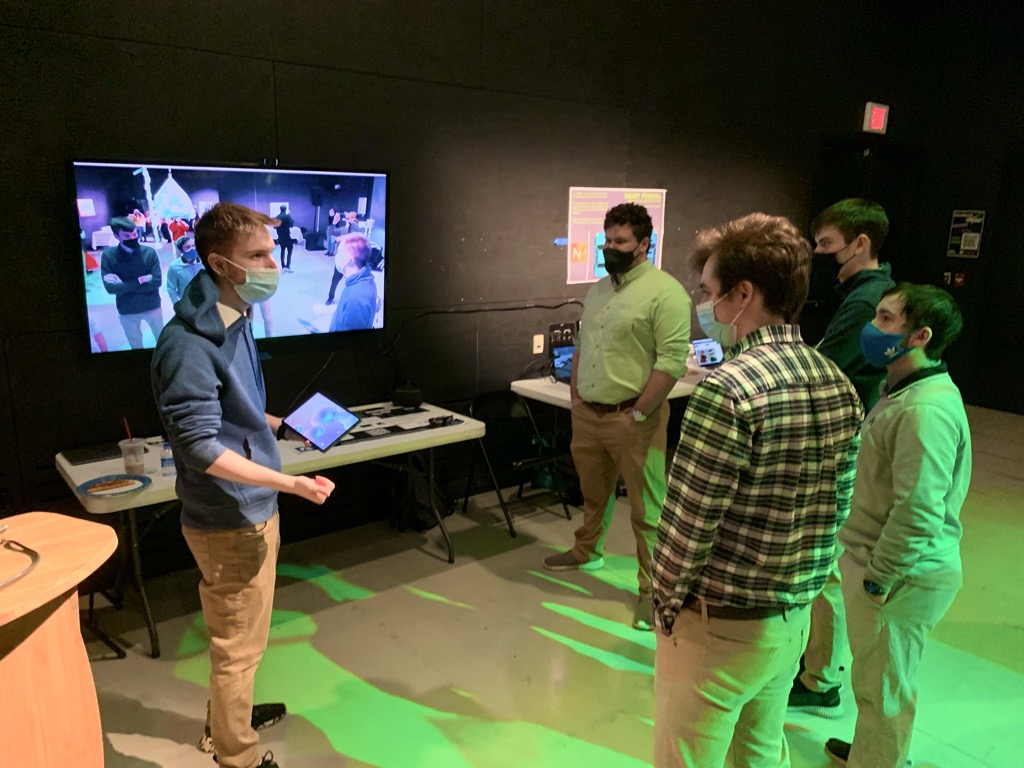
Student showcase highlights outpouring of student creativity across SCIS
After a year and a half of coping with challenges caused by COVID-19, students in the School of Computing and Information Science are re-emerging to reimagine a post-pandemic world.
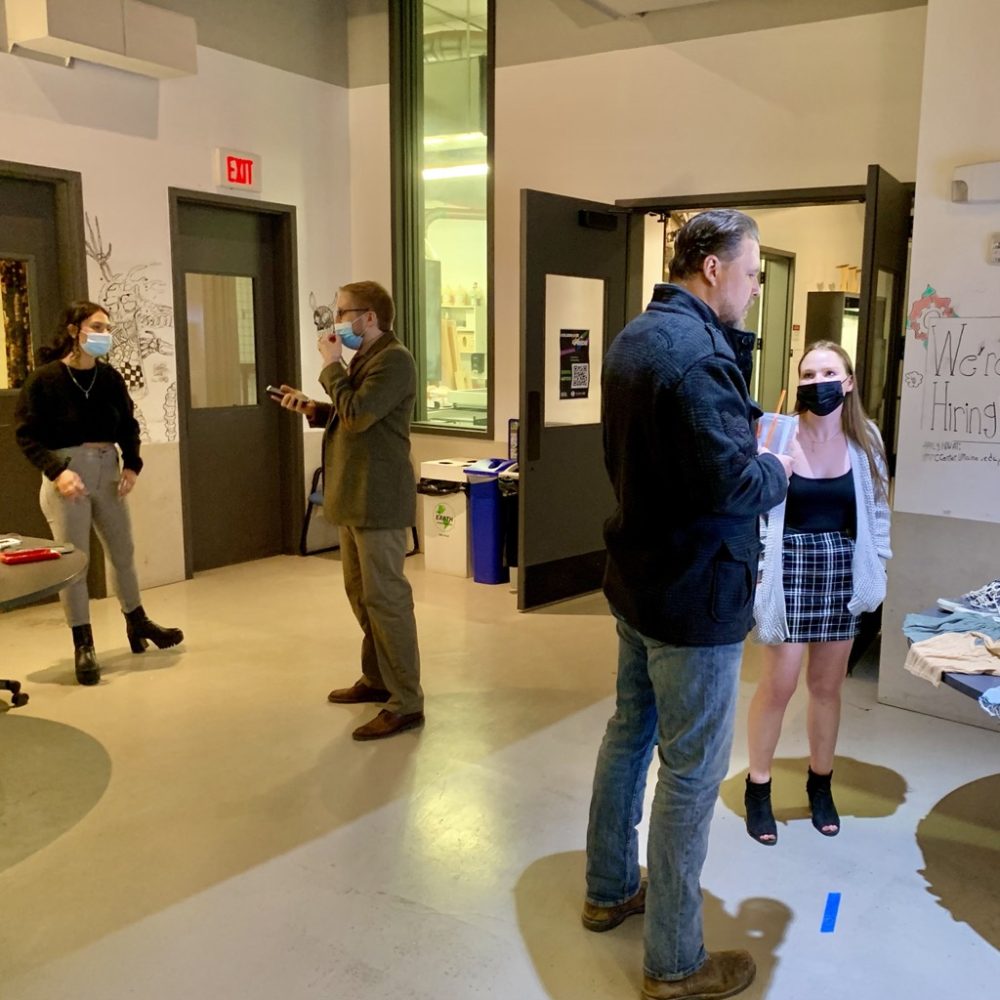 For the first time, the decades-old tradition of New Media Night transformed into a showcase for the entire school as Computer Science undergraduates joined our annual presentation of senior projects. The 2022 SCIS Showcase featured a resurgence of student creativity, inspired in part by emerging from the limitations of life under COVID-19.
For the first time, the decades-old tradition of New Media Night transformed into a showcase for the entire school as Computer Science undergraduates joined our annual presentation of senior projects. The 2022 SCIS Showcase featured a resurgence of student creativity, inspired in part by emerging from the limitations of life under COVID-19.
A number of the presenters imagined new uses for current hardware and software, whether repurposing phone case materials, discarded masks, vintage cinema, or blockchains and cryptocurrencies.
Computer Science students presented proposals and prototypes for new ways to classify images with neural networks (ProtoPNet), create verifiable avatars for virtual worlds (DeepReal, Safe Virtual Reality), or help campus organizations such as labs and academic departments track staff and equipment (Equiptrac, Lab Portal, JMG Checkin). Students also produced an autonomous vehicle that can produce maps (Turtlebot) and an interface to detect neuropathy.
For their part, New Media makers produced games, innovative devices, mobile apps, and unique cinematic experiences. Suspended from the 23-foot ceiling in the main gallery was a sculpture by Claire Gilpatrick created from discarded masks. Additional works on view suggested other metaphors of re-emergence from quarantine.
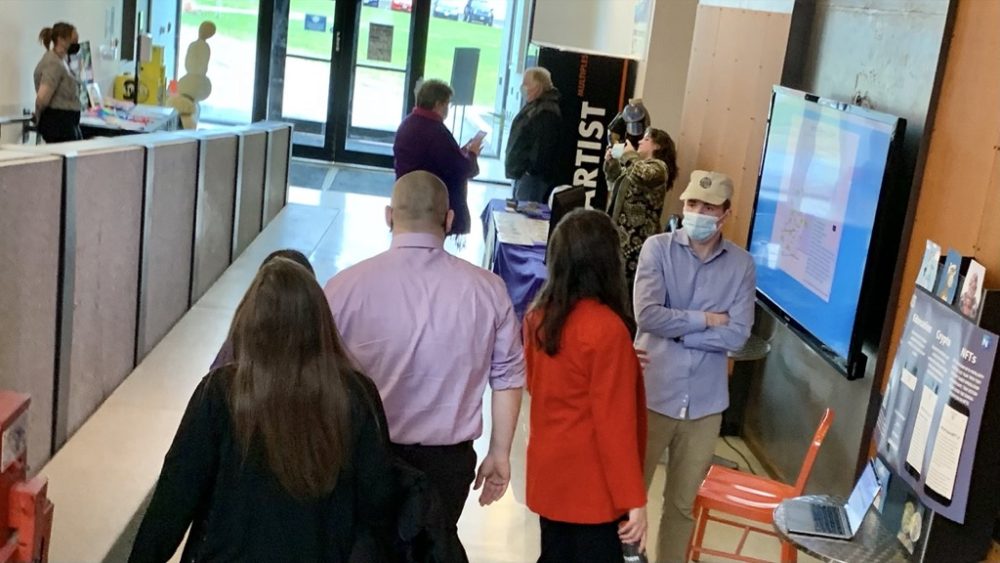 The uncertain future of cinema after the pandemic was the theme for Corey Whitman’s documentary about economic pressure on movie theaters, Peter Vigoda’s colorful rotoscoped reinterpretation of vintage movies, and Jake Hotaling’s crowdsourced video shorts, which draw from poignant messages shared on social media such as Instagram and TikTok.
The uncertain future of cinema after the pandemic was the theme for Corey Whitman’s documentary about economic pressure on movie theaters, Peter Vigoda’s colorful rotoscoped reinterpretation of vintage movies, and Jake Hotaling’s crowdsourced video shorts, which draw from poignant messages shared on social media such as Instagram and TikTok.
Stories of a world gone awry were grist for original games and audio narratives from Marion Cyr, Stella Cashman, Bobby Hebert, and Andreas Sandoval. Cashman remixed elements from Dungeons and Dragons and text adventures into a new interactive format. in Sandoval’s RPG game, even the Zodiac signs have abandoned humanity. Carly Cornish’s 3D printed cosplay armor was likewise inspired by ancient sources; her video tutorials can help other creators follow her process, from sketching and 3D modeling to 3D printing, painting, and assembling their own costume.
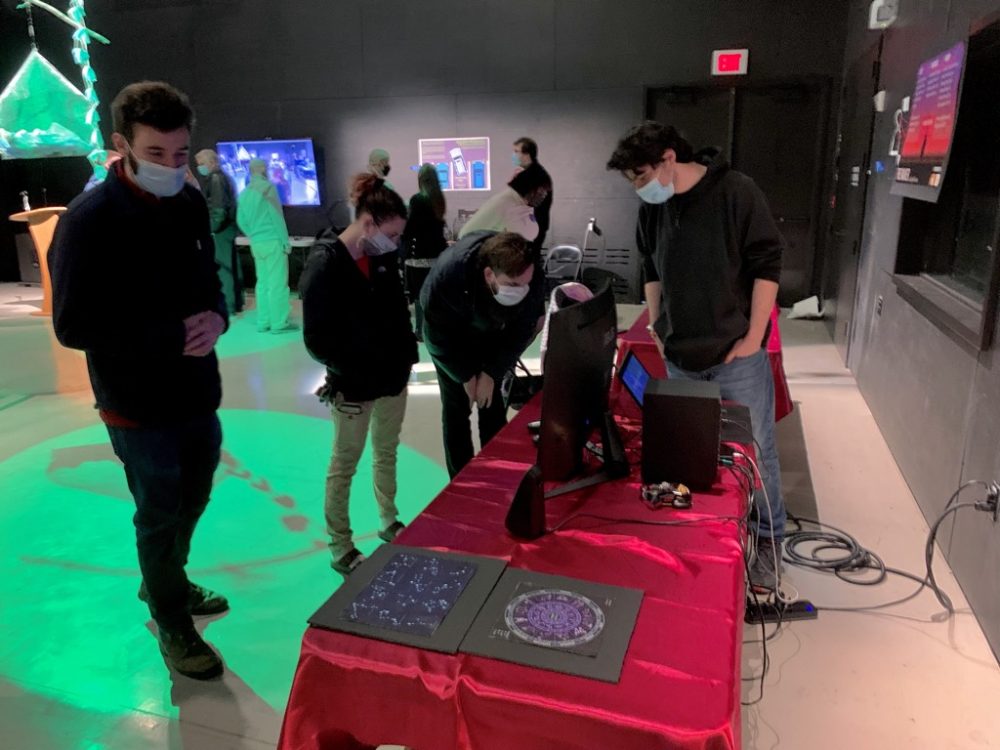
Other students are adapting to a post-quarantine world in which people find themselves cleaning out apartments and venturing out for social connections. Alyssa Demanche collaborated with the Health Equity Alliance to build a web-based Bangor Pride Passport where visitors could earn points by visiting stores and other locations in the Bangor area. Swiper by Katie Stewart helps users buy or find homes for used clothing–a useful app given thats textile production already pours more greenhouse emissions into the atmosphere than international flights and ocean shipping combined. Nate Reid’s prototype for a mix-your-own-drink interface re-imagined the bartending experience, while Maizy Guinn and Claire Hubby interviewed a dozen mothers for a podcast intended to help college graduates living on their own for the first time.
David Lavoie and Zac Fitts both chose machine learning to craft new lenses to view our surroundings. Lavoie created a prototype for an augmented reality device to enhance the edges of objects seen to help users with vision impairment or others during challenging visual conditions. Fitts took on a perennial problem–how to find parking on campus–and created a machine learning app to identify open parking spots. Given the challenges of mounting a WebCam on a university rooftop in adverse weather conditions, Fitts tested his system using a realistic game simulator.
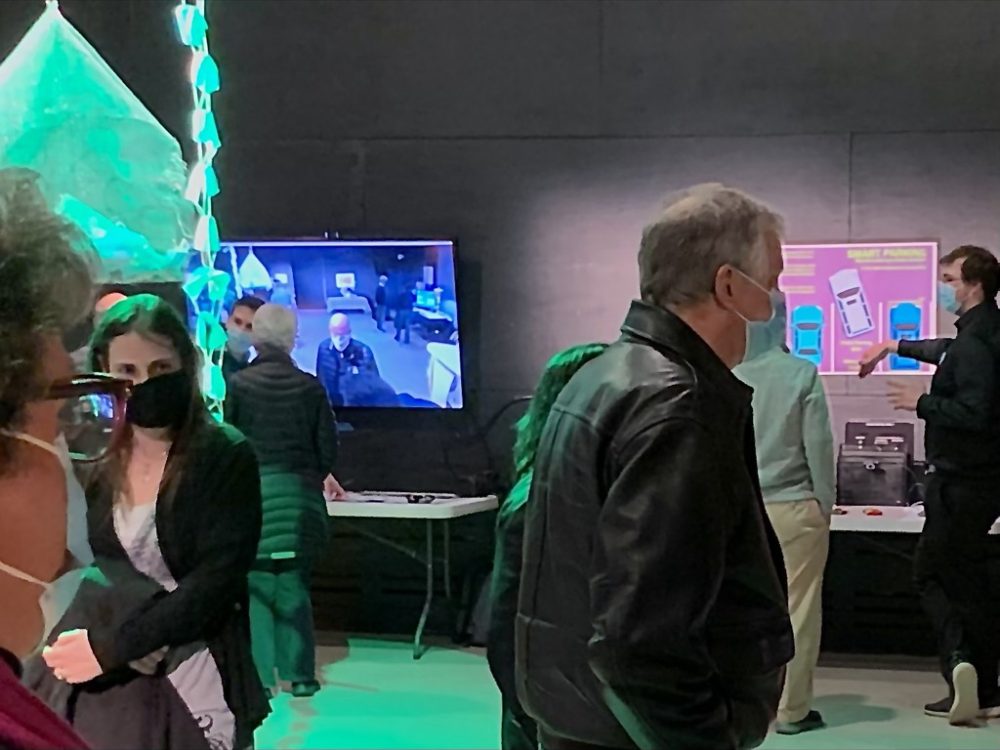 Both undergraduate majors of the school emphasize project-based learning. Computer science tends to focus on best practices applicable to any computing environment, including the mathematical basis for computers and best practices for robust software architecture. New Media, on the other hand, trains students to apply specific skills such as animation, design, games, photography, video, wearable devices, and web and mobile apps.
Both undergraduate majors of the school emphasize project-based learning. Computer science tends to focus on best practices applicable to any computing environment, including the mathematical basis for computers and best practices for robust software architecture. New Media, on the other hand, trains students to apply specific skills such as animation, design, games, photography, video, wearable devices, and web and mobile apps.
